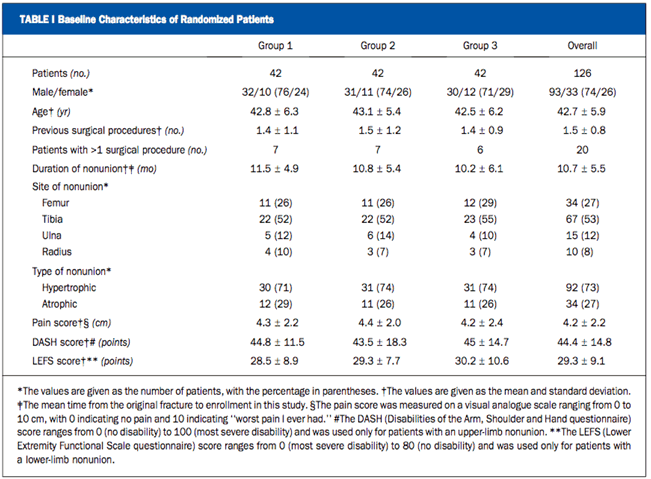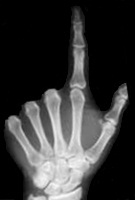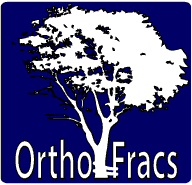Journal Club
May 2010
Extracorporeal Shock-Wave Therapy Compared to Surgery for Hypertrophic Long-Bone Nonunions
- Authors: Angelo Cacchio, Lucio Giordano, Olivo Colafarina, Jan D. Rompe, Emanuela Tavernese, Francesco Ioppolo, Stefano Flamini, Giorgio Spacca, Valter Santilli
- Institution: Department of Physical Medicine and Rehabilitation and the Division of Orthopaedic Surgery, Department of Surgery, ‘‘San Salvatore’’ Hospital of L’Aquila; the Physical Medicine and Rehabilitation Center, Nomentana Hospital, Rome; and the Department of Physical Medicine and Rehabilitation, School of Medicine, ‘‘La Sapienza’’ University, Rome, Italy
- Journal: J Bone Joint Surg Am. 2009;91:2589-97
No external source of funding
Reviewed by
Dr Registrar MBBS | Senior Accredited Orthopaedic Registrar
Introduction
- ECSW has been investigated as treatment for non-union
- No prospective RCT has been performed comparing ECSW directly to surgery
- ECSW thought to work by way of microfracture that induces healing reaction and vascularity
- Aims
- Compare ECSW to surgery
- Ascertain differences between two different ECSW generators
Methodology
- Prospective three-arm RCT between Oct 2001 - Sep 2004
- Two separate shock-wave devices and one surgery arm
- Non-union was fracture with no progression of healing for 1 month for at least 6 months
- Inclusion criteria
- Long-bone non-union and skeletal maturity
- Both hypertrophic and atrophic
- Exclusion criteria
- Bone tumours, pathological fractures, infected non-unions, breakage of fixation, implanted pacemaker, blood coagulation disorders, use of anti-coagulants, pregnancy
- Treatment
- Computer generated list for randomisation
Shock-Wave Therapy
- 4 sessions 1 week apart
- 4000 impulses applied to fracture site
- All patients underwent regional nerve block
- Limb immobilised for 6-12/52
- NSAID's and ice-packs for 3/7 following Rx
- Returned to pre-op WB status 3/7 after Rx
- Two different generators used
- Differing energy flux density
- Surgical Therapy
- Removal of implant, decortication of fracture site, refreshing of fracture site, recanalizing the medullary canal, reducing and fixing fracture site
- Autogenous bone graft in 12 patients
- Ex-fix in 7 patients
- Computer generated list for randomisation
Shock-Wave Therapy
- Outcome Measures
- Xray
- AP/Lat Xrays assessed before Rx and at 3,6,12,24 months post Rx
- Radiologists were blinded to nature of intervention
- Primary end point
- 4 cortical union
- AP/Lat Xrays assessed before Rx and at 3,6,12,24 months post Rx
- Secondary end points
- Functional and pain scores
- DASH
- LEFS
- Self-rated pain score
- Patient satisfaction assessed
- Offered surgical Rx at 6/12
- None accepted
- Xray
- Statistical Analysis
- Worst-case scenario intention to treat principle for those that did not complete Rx or follow-up
- 2-sided Chi-square test for union
- Significance set a 5%
- Two-way analysis of variance for secondary end-points
- Power calculation for sample size
- 35 patients per group for difference of 30% in each group

Results
- 126 patients
- 92 hypertrophic
- 34 atrophic
- 15 lost to follow-up
- 11 of which were atrophic non-union
- 42 in each arm
- Group A - ECSW low energy flux
- Group B - ECSW high energy flux
- Group C - Surgery
- High inter and intraobserver correlation for radiographic measures
- Results
- All patients returned to work
- 19% upper limb and 30% lower limb on reduced activity
- Adverse effects
- ECSW
- Local complication in 27% (haematoma that resolved in 4-6/7)
- Surgery
- 4.8% infection rate (2 patients)
- 1 radial nerve neuropraxia - resolved within 4/12
- ECSW
- Xrays
- No difference between 3 groups
- Healed At six months
- 70% of the nonunions in Group 1,
- 71% of the nonunions in Group 2,
- 3% of the nonunions in Group 3
- Healed At six months
- No difference between 3 groups
- Clinical Outcomes
- 3 and 6 months after treatment
- two shock-wave groups were significantly better than those in the surgical group (p < 0.001).
- 12 and 24 months
- no differences among the three groups
- except DASH score
- which differed significantly between Groups 1 and 3 (p = 0.038)
- and between Groups 2 and 3 (p = 0.021) at twelve months.
- 3 and 6 months after treatment
- All patients returned to work
Discussion
- Previous studies report success rates of ECSW of between 41-91%
- Higher for hypertrophic compared to atrophic
- Union rates similar
- Functional and pain scores better in first 6/12
- ? Related to hyperstimulation analgesia
- Some in vitro studies suggest the lower the energy flux of the ECSW generator the greater the proliferation of osteoblast-like cells
Pros of Study
- Study design
- RCT partial blinded
- Comparison between gold-standard and new treatment
- Clear inclusion/exclusion criteria
Cons of Study
- High rate of atrophic union patient drop-out
- Cannot adequately blind radiologists to treatment
- Did not discuss what treatment options the patients that did not unite underwent
- ? Whether ECSW made surgery more difficult due to scarring
- Unclear regarding weight-bearing status and immobilisation
- Appear to be contradictory
- Unclear on immobilisation following surgical treatment
Take home message
In hypertrophic non-union ECSW therapy may be an alternative to surgical intervention
Webpage Last Modified:
4 July, 2010



